Radial Gauge
Radial Gauge allows you to measure processing efficiency through key performance indicators like Value and Goal. To showcase a radial gauge, a minimum requirement of 1 actual or target value is needed.

How to configure flat table data to Radial Gauge?
To construct a radial gauge, a minimum requirement of 1 column is needed. You can visualize both measure, calculated measure and dimension column data in radial gauge control.
The following procedure illustrates data configuration of Radial Gauge.
Drag and drop Radial Gauge control icon from the Tool box into design panel. You can find control in Toolbox by search.

After control added in design panel, click Assign Data button at Design Tools Pane to open the Data configuration pane.
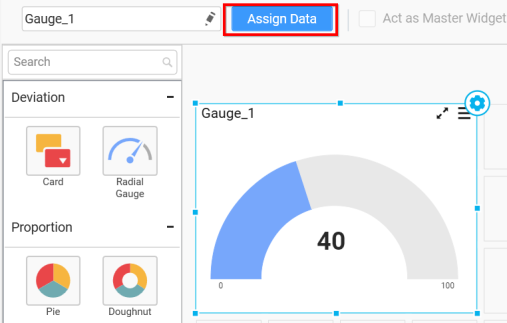
Bind column through drag and drop element from Measures section to Actual Value.
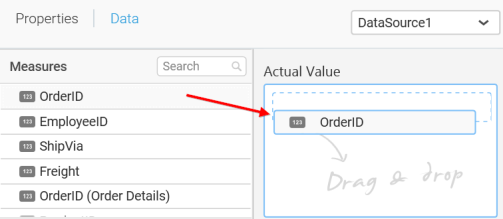
Drag and Drop the elements from section to Target Value.
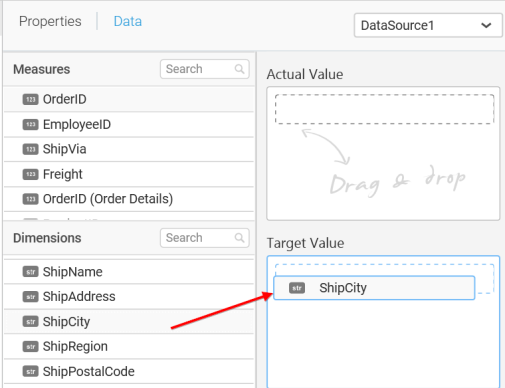
You can use aggregate function to change the Actual Value of the radial gauge widget.

You can use Filter option to filter the data by specifying the filter condition.

Measure Filter will be shown to set the Ranges.
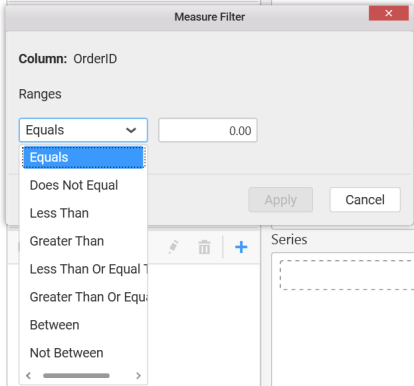
You can clear the filter by selecting the Clear option.
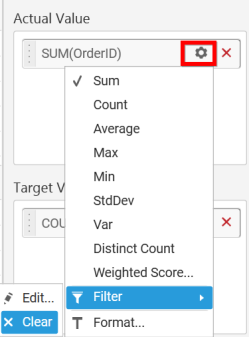
You can format the elements by selecting the Format option.
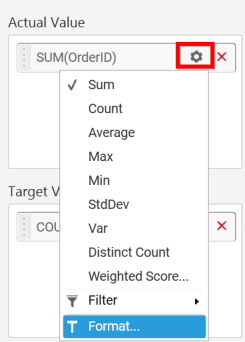
Measure Formatting window will be shown to change the measure.
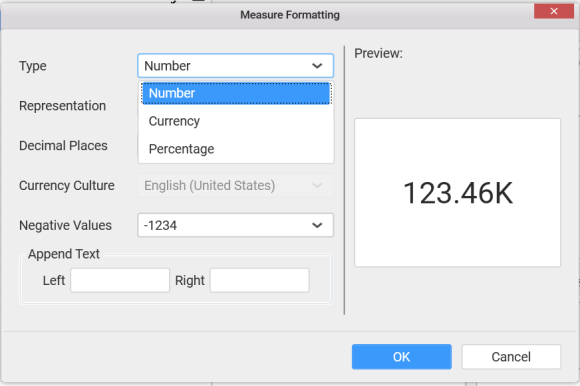
You can change the Target Value by changing the settings.

Filters can be applied to the Target Value by changing the filter condition.

You can clear the filter by selecting the Clear option.
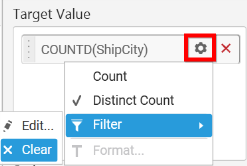
Drag and Drop the elements from sections to Series.
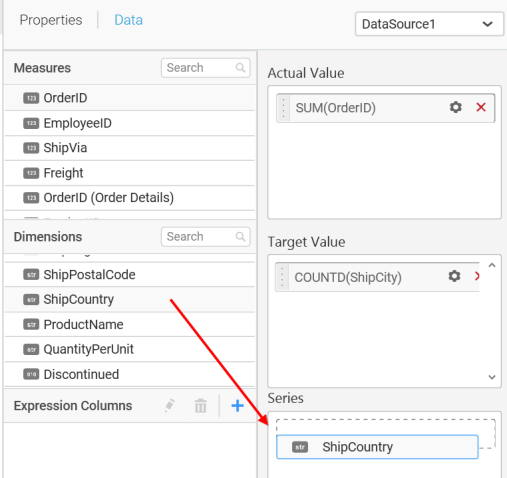
Here, is an illustration
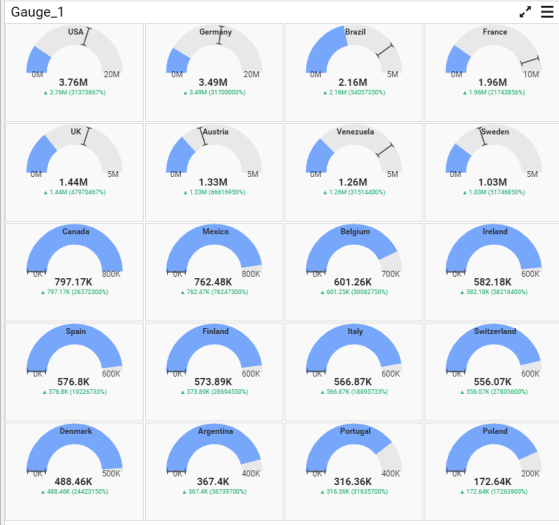
How to configure the SSAS data to Radial Gauge?
To construct a radial gauge, a minimum requirement of 1 column is needed. You can visualize both measure, calculated measure and dimension column data in radial gauge control.
Following steps illustrates configuration of SSAS data to Radial Gauge.
Drag and drop Radial Gauge control icon from the Tool box into design panel. You can find control in Toolbox by search.

After control added in design panel, click Assign Data button at Design Tools Pane to open the Data configuration pane.

Drag and drop a column under Measures category into Actual Value.

Drag and drop a column under Measures category into Target Value.
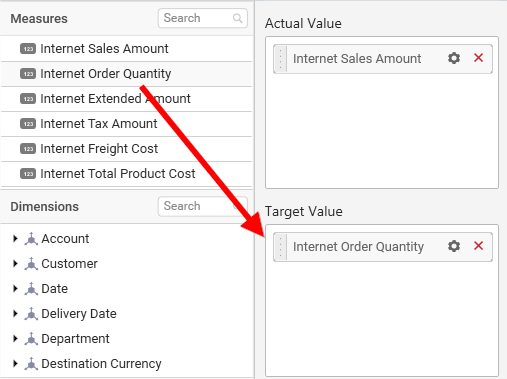
Define the filter criteria to match through choosing Edit option in Filter menu item.
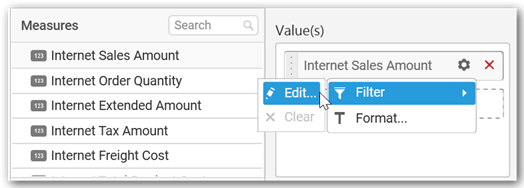
The Measure filter dialog will be shown where you can choose the filter condition and apply the condition value.
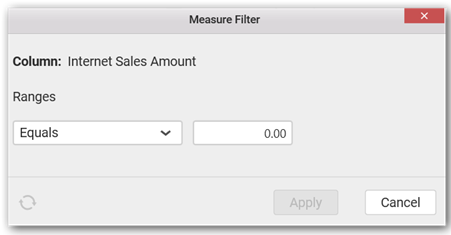
Select Clear option to clear the defined filter.
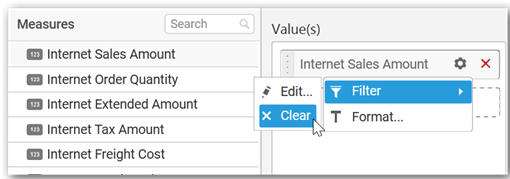
Select Format option to define the display format to the values in the column through Measure Formatting window.
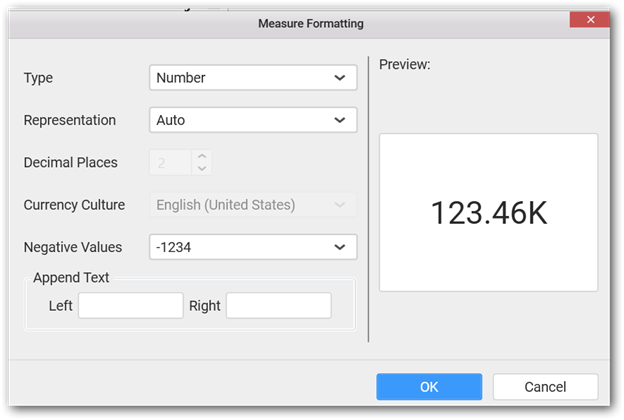
Choose the options you need and click OK.
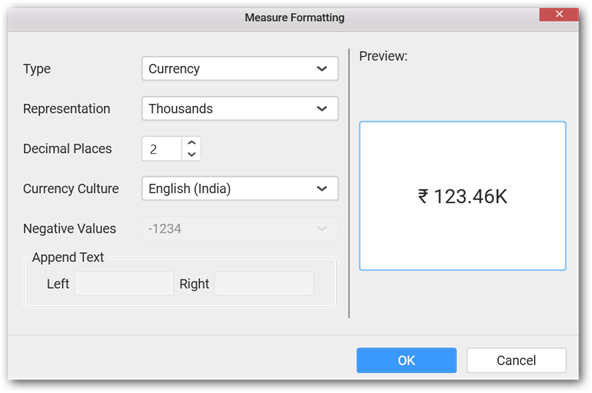
Add a dimension level or hierarchy into Series section through drag and drop.
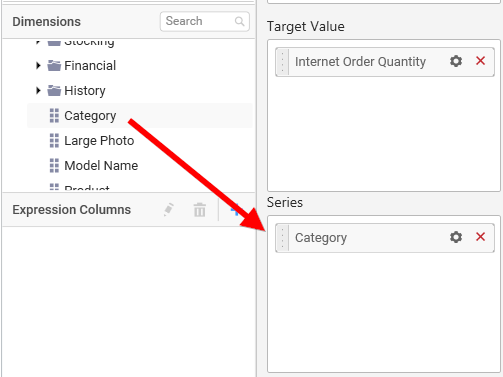
Define filter criteria through Filter(s)… menu item in the Settings drop down menu.

To know more about filters, refer here.
Here, is an illustration

How to format Radial Gauge?
You can format the radial gauge for better illustration of the view that you require, through the settings available in Properties pane.
General Settings

Header
This allows you to set the container header text.
Description
This allows you to set description for this radial gauge widget, whose visibility will be denoted by i icon, hovering which will display this description in tooltip.
Basic Settings
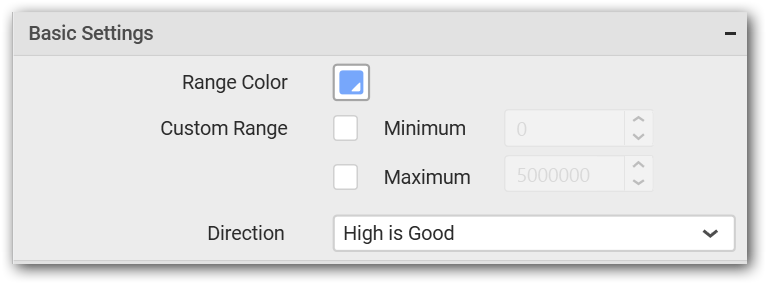
Range Color setting allows you to customize the range color of Gauge widget. Click the color to drop down the list of palette colors and select one to apply to the range.
Custom Range setting allows you to customize the range start and range end values of Gauge widget. Enable the Minimum and/or Maximum value boxes for editing through selecting respective checkbox.
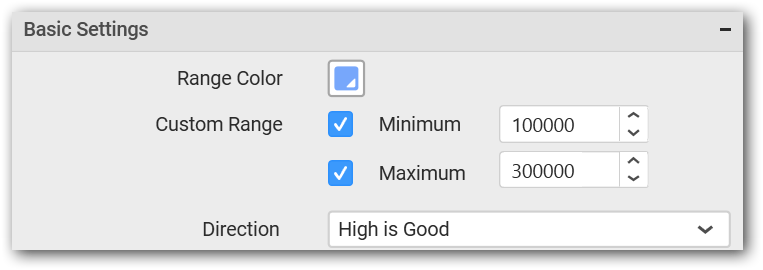
Note
Range Start Value should be always greater than range end value.
Direction setting allows you to define the quality of value through specifying whether higher value should be treated as good or bad.
Filter Settings

Act as Master
This allows you to define this gauge widget as a master widget such that its filter action can be made to listen by other widgets in the dashboard. This option is available only when a column in Series section is configured.
Ignore Filter Actions
This allows you to define this gauge widget to ignore responding to the filter actions applied on other widgets in dashboard.
Link Settings
You can enable linking and configure to navigate either to a published dashboard URL or to a general URL with or without parameters. For more details, refer Linking.
Container Appearance
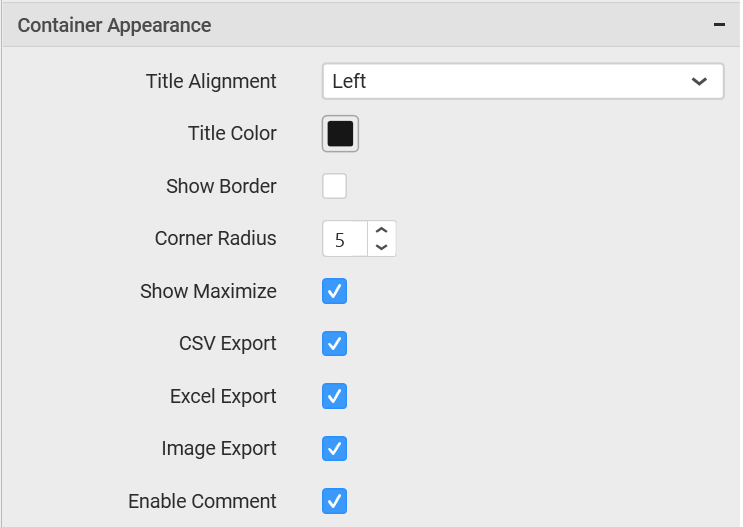
Title Alignment
This allows you to handle the alignment of widget title to either left, center or right.
Title Color
This allows you to apply text color to the widget title.
Show Border
This allows you to toggle the visibility of border surrounding the widget.
Corner Radius
This allows you to apply the specified radius to the widget corners. Value can be between 0 and 10.
Show Maximize
This allows you to enable/disable the maximized mode of this radial gauge widget. The visibility of the maximize icon in widget header will be defined based on this setting. Clicking this icon in viewer will show the maximized view of the radial gauge widget.
CSV Export
This allows you to enable/disable the CSV export option for this radial gauge widget. Enabling this allows you to export the summarized data of the widget view to CSV format.
Excel Export
This allows you to enable/disable the Excel export option for this radial gauge widget. Enabling this allows you to export the summarized data of the widget view to XLSX format.
Image Export
This allows you to enable/disable the image export option for this radial gauge widget. Enabling this allows you to export the view of the widget to image format (*.JPG) in viewer.
Enable Comment
This allows you to enable/disable comment for dashboard widget. For more details refer here